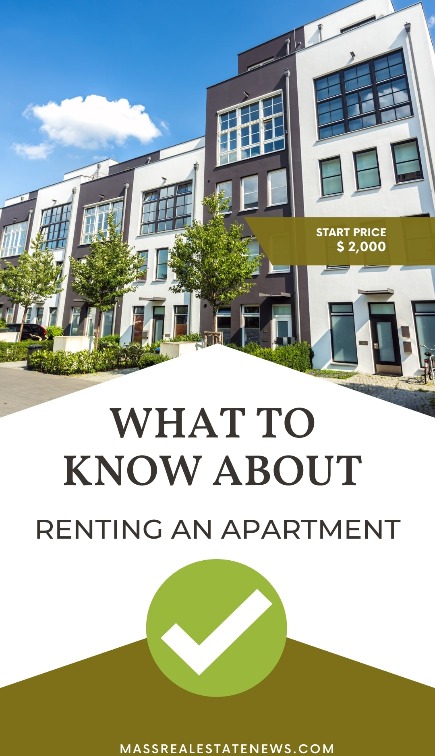Living in an apartment comes with its pros and cons. On the positive side, maintenance is more straightforward, lower costs, and enhanced safety. Access to amenities and time savings are also advantages. However, limited space, noise, and parking challenges can be drawbacks.
It’s crucial to consider factors like location, lease terms, and preparations for the move. Comparing apartments to single-family homes can also help in decision-making. Managing challenges and ensuring a smooth move is crucial.
Finding an apartment can sometimes be challenging, depending on your location. Looking at one of the best apartment rental websites to start your search is helpful. In my experience as a real estate agent, you should start your search months before you would like to take occupancy.
Pros of Living in an Apartment
An apartment offers numerous benefits, making it an attractive housing option for many individuals. From lower maintenance and repair responsibilities to cost-effectiveness compared to homeownership, here are some of the advantages of apartment living:
Lower Maintenance and Repairs
One of the significant advantages of living in an apartment is the reduced burden of maintenance and repairs. Unlike homeowners responsible for attending to every fix or upgrade, tenants can enjoy the convenience of having landlords or property management teams handle most maintenance tasks.
From fixing plumbing issues to repairing appliances, this allows apartment dwellers to save time, effort, and money.
Cost-Effectiveness Compared to Homeownership
Another appealing aspect of apartment living is its cost-effectiveness compared to homeownership. Renting an apartment often involves lower monthly expenses since it typically excludes property taxes, homeowner’s insurance, and hefty mortgage payments.
Additionally, utilities and maintenance costs are generally shared among the community, reducing financial burdens. This affordability can free up funds for savings, investments, or other personal goals.
Enhanced Safety and Security Measures
Security is a top concern when choosing a place to live, and apartments often offer enhanced safety measures. Gated communities, security cameras, and vigilant neighbors create a sense of security, providing peace of mind for residents.
Many apartments also have controlled entry systems, ensuring only authorized individuals can access the building. These security features contribute to a safer living environment, particularly for those prioritizing personal safety.
Access to Amenities and Facilities
An apartment provides access to many amenities and facilities that can enhance the overall living experience. Many apartment complexes offer social clubs, playgrounds, fitness centers, swimming pools, and underground parking.
These amenities are often conveniently located within the complex, allowing residents to enjoy leisure time without traveling far from home. The availability of such facilities can contribute to a more enjoyable and convenient lifestyle.
Time Savings from Reduced Maintenance and Commute
Apartment living can also save valuable time by minimizing maintenance tasks and reducing commuting distances. With maintenance responsibilities handled by the landlord or property management, residents can focus more on personal pursuits and leisure activities.
Additionally, apartments are often strategically located in urban or suburban areas, reducing commuting time and providing easier access to work, schools, entertainment, and essential amenities. This time saved can be utilized for personal growth, spending time with loved ones, or pursuing hobbies and interests.
- Lower Maintenance and Repairs
- Cost-Effectiveness Compared to Homeownership
- Enhanced Safety and Security Measures
- Access to Amenities and Facilities
- Time Savings from Reduced Maintenance and Commute
Cons of Living in an Apartment
While there are numerous advantages to living in an apartment, it’s essential to consider the potential drawbacks as well. Here are some cons to keep in mind:
Limited Space for Families and Storage
One of the significant disadvantages of apartment living is the limited space, which can make it challenging for families or individuals with a lot of belongings. Finding enough storage can be a struggle, and it may require creative solutions such as utilizing vertical storage options or renting additional off-site storage units.
Noise and Lack of Privacy
Living in an apartment often means sharing walls with neighbors, leading to increased noise levels and a lack of privacy. Thin walls can make it difficult to escape the sounds of everyday activities or loud neighbors. Common areas such as hallways and laundry rooms may also contribute to noise disturbances.
Parking Challenges and Pet Restrictions
Apartment complexes may have limited parking options, particularly in densely populated areas. Finding a convenient parking spot near your unit can be a constant struggle. Furthermore, many apartments have restrictions on pet ownership, including limitations on the number, size, or breed of pets allowed. This can pose challenges for pet owners looking for a suitable living situation.
Potential Restrictions and Regulations
Living in an apartment means abiding by the rules and regulations of the building management or homeowners association (HOA). These restrictions can range from limitations on noise levels to restrictions on exterior modifications or even prohibiting certain activities. HOA fees go towards protecting the interests of all the owners within the community.
Reviewing and understanding the building regulations before committing to an apartment lease is essential.
Considerations for Your Apartment Move
Several important considerations must be remembered when planning your move to an apartment. These include choosing a suitable apartment, understanding the importance of location, familiarizing yourself with lease terms and agreements, preparing for moving, and settling into your new community.
Choosing the Right Apartment
When selecting an apartment, ensure it aligns with your needs and preferences. Consider factors such as size, layout, amenities, and proximity to essential amenities like grocery stores, schools, and public transportation. Visit multiple apartments and thoroughly inspect them before making a decision.
Don’t hesitate to ask questions about the building’s management and any policies affecting your living experience.
The Importance of Location
The location of your apartment can significantly impact your daily life. Evaluate the neighborhood’s safety, accessibility to work or educational institutions, nearby amenities, and overall atmosphere. Research local transportation options and factor in commuting distances and times to determine if the location suits your lifestyle and daily routines.
Understanding Lease Terms and Agreements
Before signing a lease agreement, please carefully read and understand its terms and conditions. Pay attention to the lease duration, renewal options, rent increase policies, and any restrictions or rules imposed by the landlord or property management.
Clarify any uncertainties with the property owner or manager to avoid future conflicts or misunderstandings.
Preparing for the Moving Process
A smooth moving process requires adequate preparation. Create a checklist of tasks, including notifying utility providers of your move, packing your belongings efficiently, and arranging for professional movers or enlisting the help of friends and family.
Label boxes properly and prioritize items to be unpacked first in your new apartment. Consider setting up essential services such as internet and electricity ahead of time to ensure a seamless transition.
Settling In and Getting to Know Your New Community
Take the opportunity to familiarize yourself with your new community. Introduce yourself to neighbors and participate in community activities or gatherings to establish connections. Explore the local area, including parks, restaurants, and nearby attractions.
Research local services like healthcare providers, grocery stores, and recreational facilities to make settling into your new neighborhood a smooth and enjoyable experience.
Comparing Apartments vs. Single-Family Homes
When deciding between an apartment and a single-family home, it’s essential to consider the benefits and drawbacks of each option carefully. Each type of dwelling offers unique advantages and challenges that may significantly impact your living experience.
Here, we’ll explore various factors to help you make an informed decision that fits your needs and preferences.
Benefits and Drawbacks of Single-Family Homes
Single-family homes often provide spaciousness and privacy, offering more room for families to grow and larger storage areas. They typically have yards, allowing for outdoor activities and gardening. Additionally, owning a home can contribute to long-term financial stability and potential appreciation in value.
However, homeownership involves significant responsibilities, such as maintenance, repairs, and higher costs, including property taxes and insurance.
Factors to Consider for Family Living
Regarding family living, single-family homes offer an appealing environment for raising children, with ample space for them to play and grow. The availability of multiple bedrooms and dedicated shared areas like playrooms or study rooms can enhance family life.
Furthermore, the neighborhood and school district may play a vital role in your decision, as single-family homes are often located in family-friendly areas with access to quality schools and amenities.
Cost Comparison: Apartments vs. Single-Family Homes
Cost is a significant factor when weighing the pros and cons of apartment living versus single-family homes. While apartments generally have lower upfront costs and cheaper monthly rent, single-family homes typically require larger down payments, higher mortgage payments, and additional maintenance, utilities, and property management expenses.
Assessing your financial situation and long-term goals is essential to determine which option aligns better with your budget.
Weighing the Pros and Cons of Your Next Home
In making your decision, consider your lifestyle, preferences, and plans. An apartment may be better if you value convenience, lower maintenance responsibilities, access to amenities, and a more affordable short-term living situation.
On the other hand, a single-family home may be the right fit if you prioritize space, privacy, the ability to personalize your living environment, and the potential long-term investment benefits of homeownership. Ultimately, it’s crucial to evaluate your unique circumstances and make a decision that aligns with your present and future needs.
Managing the Challenges of Apartment Living
Making the Most of Limited Space
Living in an apartment often means dealing with limited space, especially for families or individuals with many belongings. However, there are several strategies to make the most out of the available space:
- Invest in space-saving furniture such as foldable tables, nested chairs, or multifunctional pieces.
- Use vertical space by installing shelves, hanging organizers, or wall-mounted storage units.
- Maximize closet storage with organizers, hanging racks, and storage boxes.
- Get creative with storage solutions like under-bed storage containers or utilizing storage ottomans.
Dealing with Noise and Privacy Concerns
Living in an apartment often means sharing walls with neighboring units, leading to noise disturbances and privacy concerns. To address these challenges:
- Invest in soundproofing materials such as rugs, curtains, or acoustic panels to minimize noise transfer.
- Establish open communication with neighbors, discuss noise concerns, and respect quiet hours.
- Create designated quiet areas within your apartment, such as a study or a reading corner.
- Consider using white noise machines or headphones to drown out unwanted noise.
Finding Solutions for Parking and Pet Restrictions
Parking can be a challenge in apartment complexes, and pet restrictions can limit options for pet owners. Here are some solutions:
- Explore parking alternatives such as renting a reserved spot or utilizing nearby public parking facilities.
- Check with the property management for available parking permits or guest parking options.
- Consider alternative transportation options like carpooling, public transport, or rideshare services.
- Research nearby pet-friendly parks or facilities to ensure your furry companions have ample space for exercise and socialization.
Navigating Building Rules and Regulations
Living in an apartment complex involves adhering to building rules and regulations the property management or homeowners association sets. Here’s how to navigate them:
- Familiarize yourself with the building’s rules and regulations by thoroughly reviewing the lease agreement or HOA guidelines.
- Contact the property management or HOA for any clarifications or concerns regarding specific rules.
- Respect common areas and shared amenities by following designated usage rules and cleaning up after yourself.
- Participate in community meetings or events to stay informed and contribute to shaping the building’s rules and regulations.
Ensuring a Smooth Apartment Move
Moving to a new apartment can be an exciting but daunting task. Ensuring a smooth transition requires careful planning and organization. Moving day will go far more smoothly with a plan in place. Here are some essential factors to consider:
Creating a Moving Checklist and Timeline
To avoid last-minute stress, create a comprehensive moving checklist. Start by listing tasks such as notifying utility providers, updating your address, and packing. Break down these tasks into a timeline to help manage your progress effectively.
Hiring Professional Movers or Doing It Yourself
Deciding whether to hire professional movers or handle the move yourself depends on your budget and the complexity of your relocation. Professional movers provide convenience and expertise, but if you prefer a DIY approach, enlist the help of friends and family to ensure a successful move.
Packing Tips and Strategies
Packing efficiently is essential for a smooth apartment move. Use sturdy boxes, bubble wrap, and packing materials to organize your belongings systematically. Label each box with its contents and the room it belongs to, making unpacking easier in your new apartment.
Addressing Utilities and Change of Address
There are some essential changes to make before moving. You should inform utility companies about your move-out date and schedule new service connections for your new apartment. Additionally, update your address with the post office, banks, subscriptions, and relevant institutions to ensure all mail and essential documents are correctly forwarded.
Settling into Your New Apartment and Making It Home
Once you’ve moved into your new apartment, take the time to settle in and make it feel like home. Unpack and decorate each room to create a comfortable and inviting space. Familiarize yourself with the apartment complex’s rules and amenities, and introduce yourself to your new neighbors to start building a sense of community.
- Create a detailed moving checklist and timeline
- Consider hiring professional movers or opt for a DIY approach
- Pack efficiently using appropriate materials and label boxes clearly
- Notify utility companies and update your address with relevant institutions
- Settle into your new apartment, unpack, and make it feel like home
Additional Resources for Apartment Living
When living in an apartment, it’s important to know additional resources that can enhance your experience and address specific needs. Here are some key areas to consider:
Rental Insurance and Tenant Rights
Protecting your belongings and understanding your rights as a tenant is crucial. Consider obtaining rental insurance to safeguard against potential loss or damage. Familiarize yourself with local tenant laws and regulations to ensure fair treatment and resolve disputes.
Efficient Heating and Cooling Systems
Apartment living often involves shared heating and cooling systems. Take advantage of these resources by regulating temperature settings efficiently. Be mindful of your energy usage to minimize costs and reduce environmental impact.
Finding the Right Homeowners Association (HOA) for You
If your apartment complex has a homeowners association, it’s essential to understand its rules, fees, and services. Research different HOAs to find one that aligns with your preferences and provides the desired amenities and community atmosphere.
Final Thoughts and Key Takeaways
As you navigate apartment living, keep these additional considerations in mind:
- Regularly review and understand your lease agreement to avoid any surprises or misunderstandings.
- Stay connected with your neighbors and community through social events or online forums.
- Stay informed about any policy changes or updates from the building management or property owner.
- Consider attending education programs or workshops offered by your apartment complex on various topics related to apartment living.
Being proactive and informed is critical to maximizing your apartment living experience.









No Comment